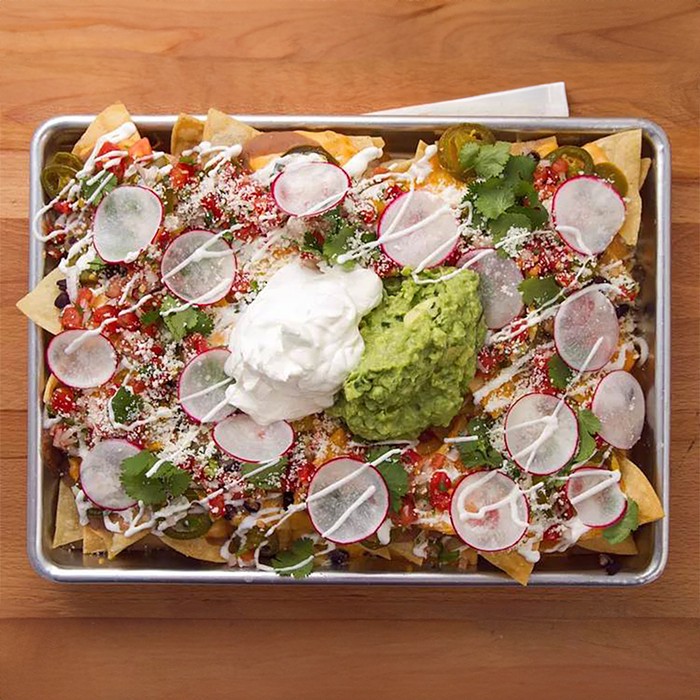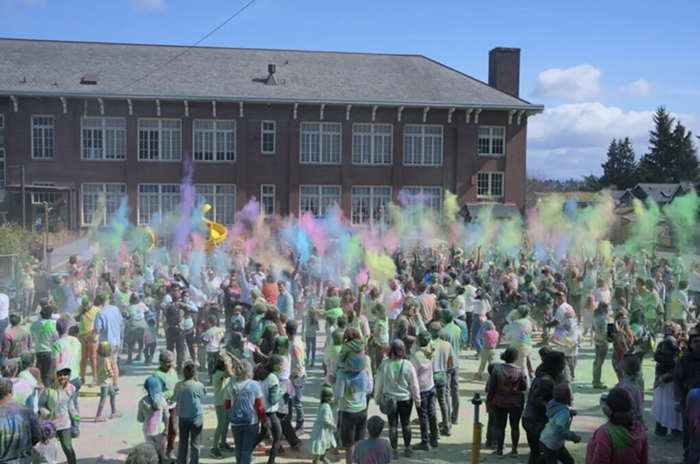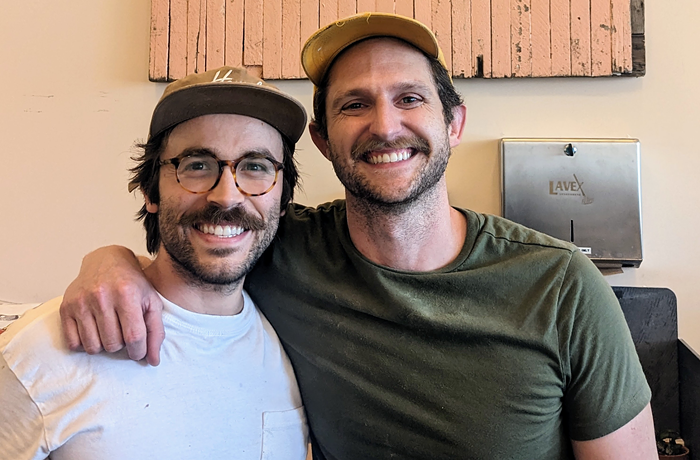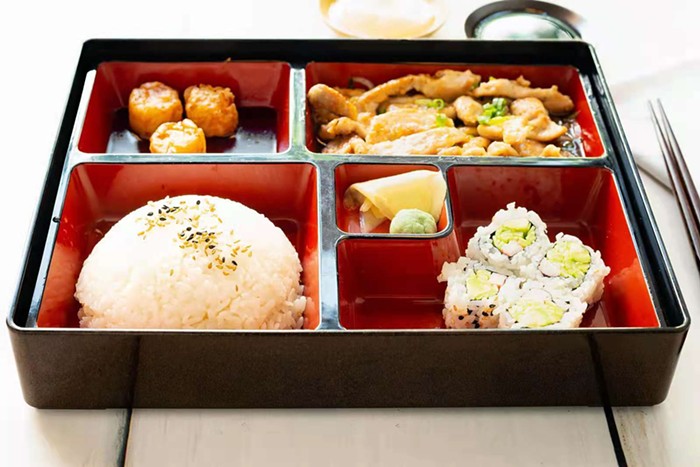Long ago, in a time before Facebook, anonymous restaurant reviewers roamed the earth. In order to experience restaurants just like anybody else—no special treatment—they telephoned from blocked numbers and made reservations under names that were not their own. They lumbered in as any other diner would, assessing astutely yet nonchalantly the performance of the coat-check girl, the host, the bringers of water, and the offerings of wine; the service was scrutinized while maintaining an entirely pococurante front. Some were rumored to whisper into primitive recording devices hidden in their sleeves. Others relied on memory or on the appearance of a weak bladder, ducking repeatedly into the restroom to scribble notes. And the food appeared on the plate, and it was eaten, and it was paid for in cash or with a credit card under an alias.
In the jungle of New York City, where the New York Times reviewer could single-handedly render a restaurant extinct, the burden of remaining unidentified was more serious still. Ruth Reichl famously chronicled her efforts in that role in her 2005 memoir, Garlic and Sapphires. She went to an acting coach, acquired a wardrobe of wigs, and dressed as a number of specific characters. She enjoyed an unlimited budget and never visited a restaurant fewer than three times—generally more— always anonymously. She wrote, "You know what it's like when I'm not in disguise: The steaks get bigger, the food comes faster, and the seats become more comfortable." The presence of a known critic could change the very composition of the furniture—this was serious business. If one needed to wear a mustache, so be it.
But, as Bill Keller noted in the New York Times in 2009, "despite all her theatrical dress-ups," Ruth Reichl "was often made by the maître d'hôtel." (One might also imagine that she was sometimes recognized because of her costumes—e.g., "Who is that lady in the crazy-looking wig on table 12?") Keller also said that despite subsequent critic Frank Bruni's less dramatic attempts to stay undercover, he'd dined with Bruni "in places where it was clear—from the trying-too-hard service, or the clusters of whispering waiters, or some other tell—that they were on to us." People being "made," the "tell"—it was an undertaking of film noir, and as doomed from the start. When Sam Sifton took the NYT reviewer post in 2009, he'd held other posts at the paper; while his photo was removed from the website, it was way too late. Gawker posted Sifton photoshopped into proposed disguises—Harry Potter, Frank Bruni, "that partying dude from Australia." Keller said Sifton would arrive unannounced to review, and noted that "a reviewer's own experience can be cross-checked with intelligence from others. So, while we don't intend to put Sam's face on sides of MTA buses, I'm not going to lose a lot of sleep over this."
Here in Seattle, Nancy Leson—the most powerful person in the industry as the reviewer for the Seattle Times for almost a decade—only abdicated her anonymity in 2008, with a "coming out party" revealing her identity on the front page of the food section. The official restaurant-reviewer title was passed on, and Leson became a blogger, excited at the new world open to her "doing in-person interviews with chefs and restaurateurs and getting out to the food and wine events I've long shied away from."
But from the start, Leson's cloak of invisibility had some unavoidable holes. She'd worked waiting tables for 17 years, five of them in Seattle, before she got her journalism degree; as she said in a column in 2000, she was "occasionally 'outed' by friends still in the trade." She was also a freelance writer in the beginning, attending food media events and interviewing chefs in person before anonymity was ever in the offing. She made efforts to stay anonymous, but, she wrote, "many of the city's high-profile chefs and restaurateurs could pick me out of a lineup," and as she acknowledged in print, she was known at favorite places like Marco's Supperclub and Le Pichet. During the 2000 Seattle P-I/Times strike, she told me recently, she waited tables at Nell's in Green Lake for a weekend, just for fun, unpaid. Also working there at the time, in the kitchen: Ethan Stowell, now of his own local restaurant empire.
In 2005, when I was a freelance writer, The Stranger asked me to interview a Seattle chef about (presciently!) street food. I chose Ethan Stowell. He owned a restaurant downtown called Union that was about as far from street food as you could get. From across the counter of the pass in the swanky, palatial space, he told me he had a thing for the mobile snack-stands of Mexico: "Oysters that have been sitting out for three hours in the sun, the tacos made in a big cast iron bucket on wheels—most people don't eat it, but I do." I'd written a few restaurant reviews, but it seemed silly to be concerned about anonymity—this guy only owned one restaurant, after all, and The Stranger had already reviewed it, and what was the big deal with restaurant reviewers being anonymous anyway? It didn't make sense to me, while talking to a chef at his fancy restaurant about his enthusiasm for eating quantities of shrimp from street carts in Mazatlan—that made sense, and that wasn't something that would be the same over the telephone.
Then there was the little problem that Seattle is the size of the head of a pin. Even before everyone's everything was all over the internet, unless you lived under a rock, you could not hide. In 2006, I happened to be sitting at the bar at the Hideout with a friend, and I let my attention drift away up among all the weird and marvelous art on the walls, helped along by a nice cold martini. I reentered reality when my friend sitting next to me said, "That's funny—my friend Bethany writes about restaurants!" Then she leaned back and indicated the man on the next bar stool down: "This is Matt—he just opened a restaurant on Eastlake!" And there was Matt Dillon, the chef/owner of a brand-new place called Sitka & Spruce, before he became one of Food & Wine's 10 best new chefs (2007), opened the Corson Building (2008), and won a James Beard Award for Best Chef Northwest (2012). He said no offense, but that I wouldn't be getting any special treatment if I came in—he cooked for people like he was cooking for friends at his house, which sounded good to me.
When I went to the original Sitka & Spruce in its tiny strip-mall spot, it was already packed. Matt Dillon said hi, and we waited and waited, standing at the tiny counter, because there were only about six tables. Eventually, he sent us a bowl of clams on the house, which (as I wrote in my review) he probably would've done for any group standing at the bar waiting and waiting and basically chewing on their own arms—or as he would've done for friends at his house. But there were no bigger steaks, or faster food, or magically more cushiony chairs. There was just the adorable space, and the sharing (and some hoarding) of plates, and his really wonderful—as in, inspiring moments of wonder—food.
There's not a lot a restaurant can do to significantly improve a critic's experience—either they've got it together or they don't. For The Stranger's reviews, I arrive unannounced, visit with a guest (almost always) twice, and am reimbursed by the paper. Are they going to come out and grate truffles over my head? That would be noticeable—and so, ultimately, are bigger steaks or better service, which can, in fact, be cross-checked with others' experiences. (If online review sites can be useful, it's in gleaning a very general sense of such things from very careful reading.) And restaurants are never going to be able to inject a sense of wonder where there isn't any.
Over the years, I've occasionally accepted invitations to media dinners or events out of (sometimes morbid) curiosity, as well as to investigate places that otherwise would tax The Stranger's definitely not-unlimited budget. When I accept such invitations, that is acknowledged in any writing that might come of it—e.g., the 2010 article "This Is Not a Review of Sullivan's Steakhouse," describing the absurdly lavish "VIP" party that the Texas chain threw itself when it opened downtown. This party had a red carpet, multiple open bars, multiple live bands, oceans of people as dressed up as they get in Seattle, and mini steak sandwiches and crab legs and itty-bitty quiches and etc.—all perfectly tasty, if not at all outstanding. The service was as good as giant-party service gets; they forced a glass of bubbly on you at the very threshold, and if you were too lazy to make your way through the crowd, trays with more drinks and piles of hors d'oeuvres, carried by smiling and attractive people, would find their way to you.
But sometimes even if a restaurant knows a critic is there—even if they know she's coming ahead of time, if they invited her—still, they flounder mightily. In 2007, I was invited to dine at Troiani, a cavernous expense-account restaurant downtown. This dinner fell into the morbid-curiosity category; the place had been there for quite a while, and it was run by the El Gaucho people, and yet one never heard anything about it at all. It was also the kind of place The Stranger would probably never review, even if it were new, which it very much wasn't. The restaurant was empty in a way that felt windswept; you wouldn't have been surprised to see tumbleweeds blowing between the well-spaced tables. Marooned in the far reaches of the place, we glimpsed staff occasionally in the distance. They never managed to bring us a bottle of sparkling water we wanted, and when we ordered a Caesar salad that was to be mixed tableside, there was an unnervingly long delay. Finally, a guy wheeled a cart up to our table, confessed that he'd never done this before and that no one else was there who had, mixed the salad in a way that made you want to get up and help him, and then said he was going to have a smoke. I wish I could say that this is completely atypical of Seattle restaurants' A-game; I cannot. I felt so bad for the salad-mixer and the emptiness, I never wrote anything about it at all. Troiani closed down in 2009.
Selfishly, not being anonymous as a food writer has meant doing much more interesting things. Before Matt Dillon opened the Corson Building, his lovely oasis in Georgetown, he let me poke around the property; I got to see the 1910 building when it was still dilapidated, before the meat-curing room and new kitchen were built, when the foliage was rampant and there was a rusty bedstead instead of raised beds. (Later, I also jotted a few things down during a many-coursed dinner there, eventually causing the woman sitting next to me at the communal table to confess that her name was not actually Barbara and that she was a restaurant reviewer, too. She joked about borrowing my notes.) At events like Gabriel Claycamp's 2008 "Sacrificio" in Port Orchard—the sacrificed one being a pig, killed in front of, then butchered and eaten with the help of, a paying crowd—it just seemed bizarre to be all cloak-and-dagger about it. To talk to Claycamp and the other attendees with transparency about my role seemed only respectful. (I am pretty sure that another food writer, seeming awkward and introducing himself as Del, was there.) At Burning Beast, held for the fifth year this summer, you've got a dozen or more of Seattle's best chefs sweating over open fire pits in an idyllic field; are you going to pretend you're just an especially curious bystander, one who likes to write things down, and then make up a name when they want to shake your hand? Will they treat you so differently back at their restaurants in Seattle that you will be unable to assess whether the place is any good or not?
For a restaurant reviewer to eat what's on their plate in the shadow of their wig, then hand down a verdict in an airless vacuum seems strange when meeting the people involved gives insight into their ethos, their interconnections, even our city as a whole. I interviewed about a dozen local chefs and food writers and cheese-shop owners between 2009 and 2012 for the magazine Edible Seattle—interviews at their homes, in which I documented (among other things) the contents of their refrigerators. Ethan Stowell had half a sandwich from Subway. ("It's a bad sandwich—I'm not gonna lie to you," he said. "It's not a good sandwich. It's only five bucks, though.") Zephyr Paquette had a bomb-shelter's worth of home-canned goods, a dog that loved carrots, and a slingshot she was using to shoot corks at the squirrels ravaging her vegetable garden. (Having invaded her home, it was not easy to write this spring that I did not love the food at her new restaurant, Skelly and the Bean, but it did help me understand the community that helped her build it, and why people like her so very much.)
For another Edible Seattle interview, I visited Kim Ricketts, a force of nature who'd put Seattle on the map in terms of food-oriented book events, doing 100-plus dinners and parties and readings with the likes of Anthony Bourdain, Michael Pollan, Patricia Wells, Thomas Keller, Jerry Traunfeld, Greg Atkinson, and Langdon Cook. Her home was as if Martha Stewart actually had good taste; she made baked feta rubbed with oregano, and we drank a lot of wine, and she called the owner of Whole Foods crazy and lightly disparaged the University Book Store and said a lot of stuff no one else ever would. Her husband and one of her kids eventually joined us, sitting around by the fire. For yet another of these interviews, Christina Choi of Nettletown and I sat out on the deck of her Eastlake apartment, talking about growing up in Seattle and her wild-food-gathering days with Foraged & Found and all sorts of things. She'd done a photo shoot for Seattle Metropolitan earlier that day, and she insisted I stay for dinner to eat the gorgeous photo-shoot coho salmon with a motley crew of people she maybe only half-knew—an architect who'd made the most beautiful meringues ever seen outside a bakery, a woman who talked about a past job nannying for a very, very rich family during which she'd drugged the children to calm them down (at which only Christina and I looked askance).
Both Kim Ricketts and Christina Choi have since passed away. I was so lucky to get to know them, even just a little—they each had the ability to, in one afternoon, make you feel like part of their family. How could anonymity compare to that?



















